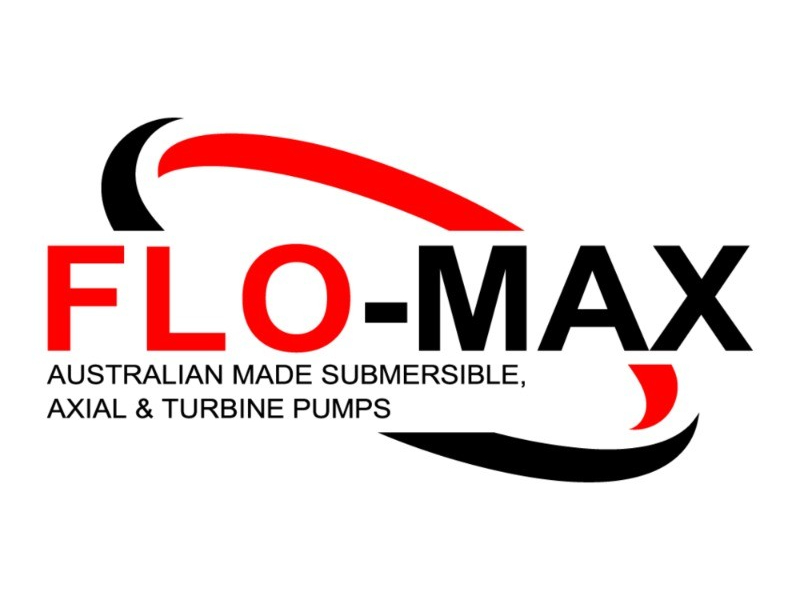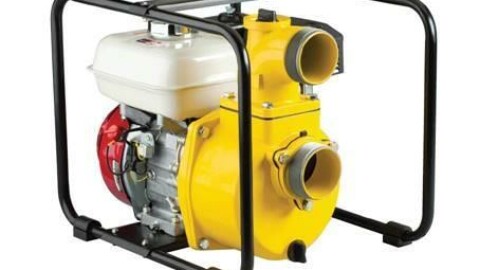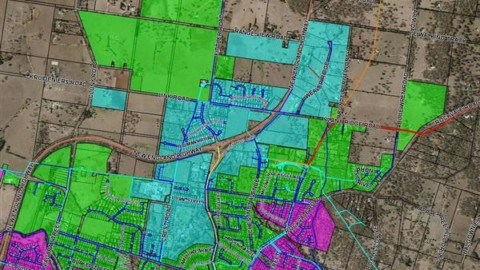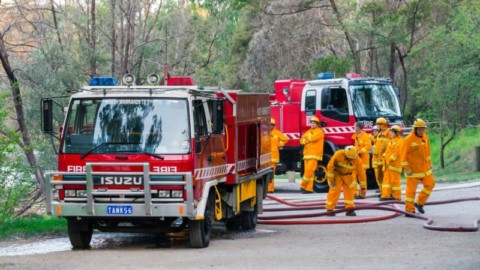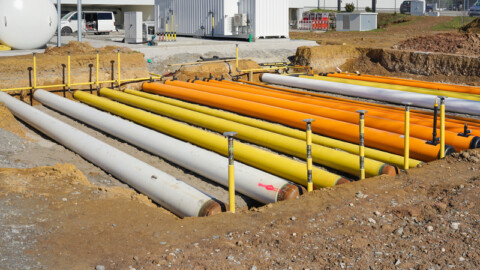Agriculture is an energy-intensive industry, with energy making up a large portion of operating costs. However, there are numerous opportunities to significantly reduce these costs by improving and optimising equipment and practices; and switching from obsolete or to a more appropriate tariff. To help Queensland farmers reduce their energy costs, through its Energy Savers Program, the State Government has been working in partnership with the Queensland Farmers’ Federation (QFF) to conduct energy audits on farms to identify energy use and costs, and to provide recommendations for changes – and funding help to implement these – to help them focus their efforts. Pump Industry magazine spoke to Andrew Chamberlin, Project Manager -Energy at QFF, about the program and one of the many farms that have benefited from it.
Helping agricultural businesses realise energy savings
The Energy Savers Program is part of the Queensland Government’s $2 billion Affordable Energy Plan. The program aims to assist agricultural businesses identify what equipment or processes are using the most energy, and what options are available to upgrade equipment or new processes that can be implemented that will achieve energy savings or productivity improvements.
The program is funded by the Department of Natural Resources, Mines and Energy (DRME) and delivered by Ergon Energy in partnership with the Queensland Farmers’ Federation (QFF) and its member organisations.
Findings have indicated farmers can significantly reduce their electricity bills through more efficient practices, with the Energy Savers Program helping them realise this saving by providing free personalised audits that identify opportunities to cut costs in areas such as on-farm heating, irrigation pumping, cooling, lighting, processing, packing, ventilation and household energy use.
The program also provides them with helpful information on financing options to help with energy efficiency upgrades, as well as rebates of up to 50 per cent to a maximum of $20,000 to implement the recommendations of the audit, including to fund equipment and plant upgrades.
The Energy Savers Program was rolled out in a number of rounds across Queensland, with the first two stages including farms in both Ergon and Energex territories:
- Irrigators Energy Savers Program 2013-2015: 30 irrigation audits were conducted on a range of different farms and irrigation types
- Energy Savers Plus Program 2015-2017: Almost 100 audits were conducted across a range of irrigation and on-
farm processing systems in a number of sectors
In total, the previous rounds of the program have:
- Delivered over 128 energy audits
- Identified more than $4 million per year in potential electricity saving
- Measured $0.63 million in actual annual bill savings across 24 sites
- Identified over 7,500MWh per year in energy savings with a payback of less than five years
- Generated over 40 case studies
- By the end of the Energy Savers Plus Program, over 62 per cent of farms had implemented or were planning to implement recommendations
- Promoted best practice energy management strategies
QFF has recently completed all audits under the latest round, the Energy Savers Plus Extension Program, and is currently working with the farmers to help them access up to $4 million in program rebates from the Queensland Rural and Industry Development Authority (QRIDA) to implement audit recommendations.
So far, over a third of farmers who had an audit have applied for funding, with a number already moving forward and implementing the recommendations.
Farmers that use over 100MWh per year were eligible to apply for the Large Customer Adjustment Program, which will provide audits and a rebate of up to $250,000 per business to help implement recommendations.
Once an audit has been completed, farmers are not obligated to implement all or any of the recommendations, and there are a variety of reasons why some do not choose to do so.
Andrew Chamberlin, Project Manager – Energy at QFF, said in one instance the farmer chose not to implement the recommendations because they changed their strategy and are now irrigating from a dam using efficient variable speed pumps.
“Now that they have set the new system up efficiently they will add solar power to cut costs even further,” Mr Chamberlin said. Irrigation a key area for energy savings
The Energy Savers Program has undertaken audits of on-farm irrigation and processing systems for many industries throughout Queensland, including cane, horticulture, cotton, nursery and garden, dairy, intensive animal industries, eggs, pork and poultry.
Irrigation is a key audit area, as it makes up a large proportion of on-farm energy use for many sectors and there are often significant opportunities to save energy with improved systems.
In particular, pumping systems are one of major areas where there is an opportunity to save energy, as around 85 per cent of the lifecycle cost of a pump is made up of energy costs.
Improvements to elements of the pumping system for an irrigation application that can result in energy efficiencies include:
- Increasing poly pipe diameter from 32mm-50mm (over 200m at 2L/s) can cut pumping costs per ML by around 90
per cent - Removing trash from suction inlets can improve pump performance by up to 20 per cent
- Reducing air entrainment from suction ends – two per cent air can reduce pump performance by 20 per cent
- Electronic diesel engines can be up to 13 per cent more efficient than mechanical engines
- Limiting water velocities to 2m/s
The three key aspects to efficient irrigations systems are:
- Needs analysis, design and planning to balance water and energy efficiency objectives to deliver the right amount of water at the right time, at the least cost
- Optimising equipment to ensure the system delivers the best result for the energy inputs
- Energy source – using the most cost effective and efficient energy source
Mr Chamberlin said many of the farms had irrigation systems that were looked at as part of the audit, so many of the recommendations made were related to improve and optimise irrigation system efficiency.
“There have been a lot of irrigation recommendations; everything from upgrading pipes to reduce friction losses, such as larger diameter pipes and less right-angled bends; to upgrading pumps to more efficient models.
“This can be because (a) pumps are very old and replacing them with a new more efficient model will get savings, or (b) the crops or something else has changed,” Mr Chamberlin said.

The solar system installed at the Mareeba pasture farm. Photo credit: Brad Owens of Mareeba
Auditing a Mareeba pasture farm
One of the audits completed by the QFF under the Energy Savers Program was for an Atherton Tableland pasture farm.
The farm produces around 8,300 tonne of hay, irrigating on sloping land with a centre pivot and travelling irrigator operated separately from a single pump which used around 130,000kWh of electricity per year.
At the time of the audit, the farm was using the obsolete Tariff 62, pumping at night during off-peak times.
Mr Chamberlin said the farmer decided to apply for the program because they wanted to identify measures to keep energy consumption below 100,000kWh per year (or 100MWh) so that the farm could remain a Small User and move to small business tariffs.
“Energy costs were getting too high and they wanted to have the farm considered a Small User so they could earn the feed in tariff for exporting surplus solar power, and they would not have to pay demand charges,” Mr Chamberlin said.
From the energy audit and discussions with the local pump shop and electrician, the best efficiency and production outcomes for the site included:
- Installing a smaller pump and motor, and adding a Variable Speed Drive (VSD) with remote pressure sensors
- Adding a 40kW solar system with a 30kW inverter to cover pump load power with possible export
- A small solar system for the farm shed
- Retrofit existing lighting with LEDs
- A change in strategy to day-time pumping using energy produced from solar on-site, with a change to Tariff 20

Table 1: Audit recommendations comparing savings between tariffs.
Implementing the audit recommendations
Mr Chamberlin said the farmer chose to implement the recommendations from the audit, but that it did take some time and help to get all the different elements right.
The 55kW pump that supplied a small centre pivot and a large traveling irrigator was removed and downsized to 45kW, and positioned lower to the water to reduce suction lift and improve efficiency.
To overcome reduced efficiencies as the irrigator moves across the paddock due to the slope, a VSD was installed on the electric motor which controls the motor speed to improve the irrigation system efficiency.
“To start with they couldn’t get enough pressure and the pump was cavitating, so they had to work closely with the pump shop and they ended up having to adjust the inlet and outlet piping a bit,” Mr Chamberlin said.
“They are now getting the pressure they need all the way up the top of the run, and as soon as it comes down the hill, you can hear the VSD slowing the pump right down.
“They are going to try larger sprinkler heads after the dry season to see if they can put more water through and gain more off the paddocks.”
Pressure control has been further improved with the establishment of a new radio link between the lateral irrigator, centre pivot and the pump, which measures the pressure available at the irrigator or pivot and sends the data back to the VSD, ensuring the correct water pressure is maintained.
The pump runs slower, using less power at the bottom of the paddock and increasing up the slopes to maintain perfect pressure and even water distribution.
Mr Chamberlin said the radio link also allows remote starting, and should the pump stop or there is a fault with the pivot or irrigator, the pump will not operate.
“The pump is actually located on another property a few minutes drive from the house. Previously, they would need to go to the pump to turn it on or off.
“Now, the controller is in the shed near the house, and the VSD automatically turns off the pump when the irrigator hits the end of its run,” Mr Chamberlin said.
“Previously, they would have to go over at, say 2am to turn the pump off, so that means they don’t have to go down to the pump if there’s an issue – as the VSD shuts things off.
“That means they don’t have to leave the kids in the house and go and turn the pump off – especially at 2am. One of them would have to stay up so they could go down and turn the pump off.
“The farmer has reported that it’s made life so much easier for them as it’s one less thing to worry about.”
The farm also installed a 39.6kW solar array with 30kW inverter, arranged in an east-west configuration, which will cover most of the load required by the new pump.
As the irrigators run for long periods, the panels facing east will reach maximum capacity earlier in the morning, with the panels facing west producing maximum power in the afternoon.
As the inverter capacity is no larger than 30kW, the installation was treated as a micro embedded generating unit, keeping the connection process simple and ensuring the farm is still able to export during times when the irrigation system is not running.
Maintaining grid connection allows the irrigator to draw grid power when required. The farmer reports they are very happy with the results of changes they have made so far based on the recommendations of the audit.

Reducing energy consumption and switching tariffs
By reducing consumption and generating power from solar PV, the audit estimated the farm was likely to reduce its energy consumption below 100,000kWh per annum while still being able to access the small business tariffs, removing any possible demand charges.
With requirements to move off obsolete Tariff 62 by June 2021, a move to Tariff 20 will provide quicker paybacks from changes made to the pumping system. However, moving the farm to Tariff 20 has not been a quick process.
Mr Chamberlin said the farm was originally classed as a Large User, which meant they had to pay demand charges and were not allowed to earn a feed-in tariff for exporting power from their solar panels.
Due to this, Ergon would not allow them to switch to Tariff 20 until they could demonstrate their consumption had been reduced below the threshold.
However, energy savings achieved through the solar and pump charges has now brought them below the threshold, making them eligible.
“The farmer has advised that electricity consumption this year has halved compared to last year on a month by month basis.
“Because of that, they have agreed with Ergon that they are no longer a Large User and that they can now get the feed- in tariff for any surplus and pay the lower Tariff 20 rate,” Mr Chamberlin said.
“They are now irrigating during the day on a flat tariff and expecting to have costs significantly reduced as well.”
The change of tariff will extend the payback period on the smaller solar system. In the future, should the farm implement changes at the shed, the savings from the irrigation changes will cover any potential difference.
For more information about the Energy Savers Program and to view case studies, visit https://www.qff.org.au/projects/energy-savers.




